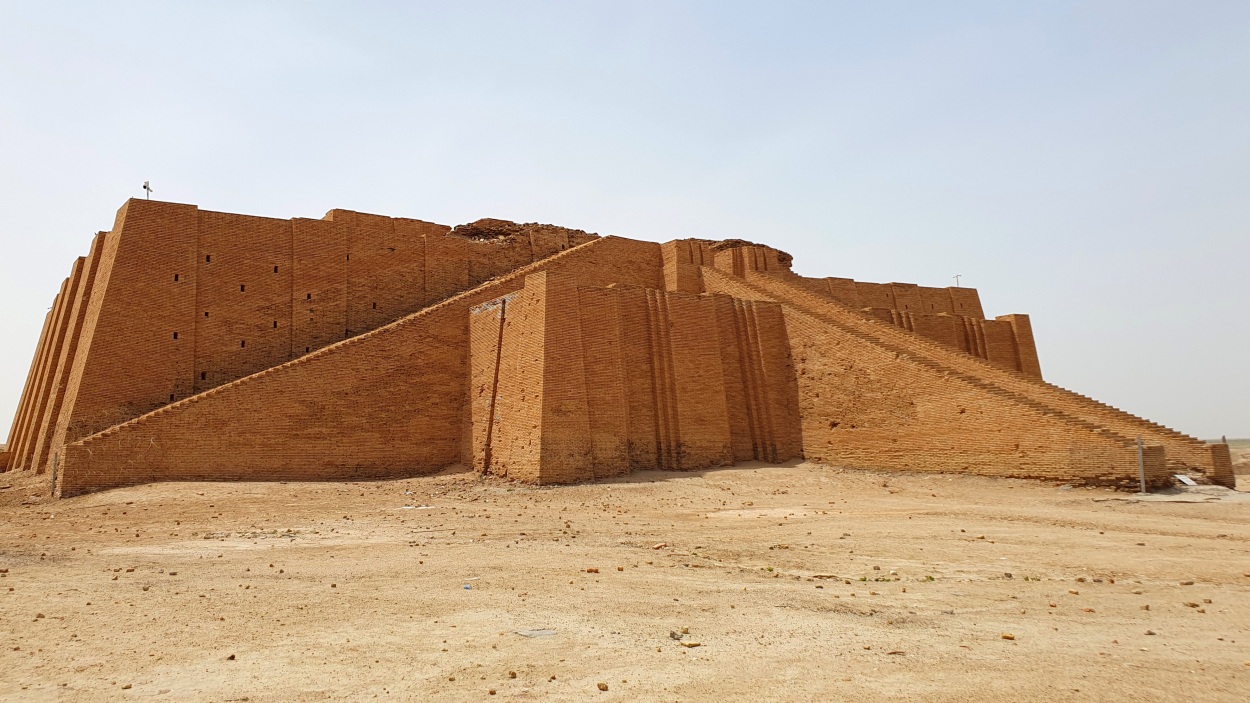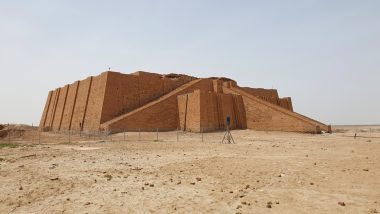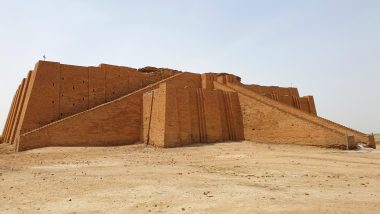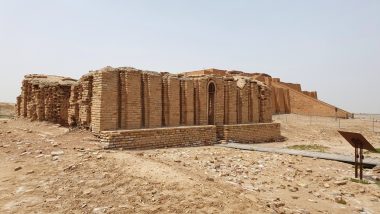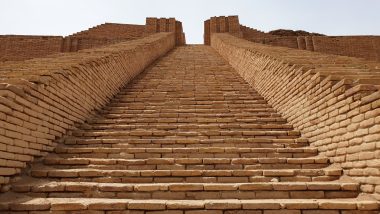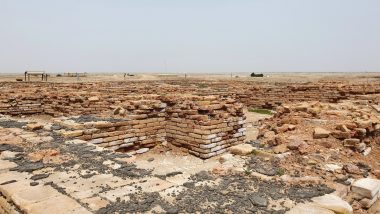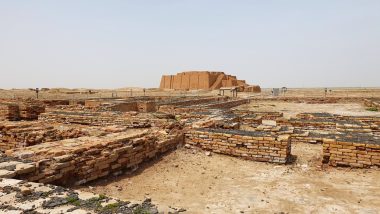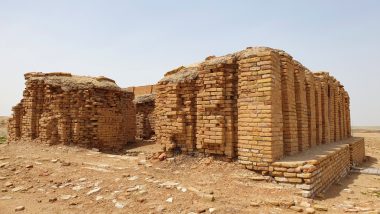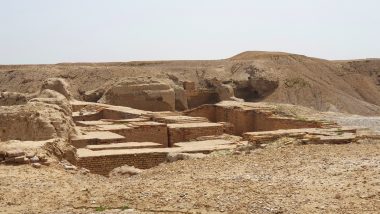The police escort brought us to Ur – an important city of ancient southern Mesopotamia, situated about 225 kilometers southeast of the site of Babylon and about 16 kilometers west of the present bed of the Euphrates River. In antiquity, the river ran much closer to the city; the change in its course has left the ruins in a desert that once was irrigated and fertile land. H.R. Hall of the British Museum made the first severe excavations at Ur after World War I. As a result, the British Museum and the University of Pennsylvania formed a joint expedition that carried on the excavations under Leonard Woolley’s directorship from 1922 until 1934. Almost every period of the city’s lifetime has been illustrated by the discoveries, and knowledge of Mesopotamian history has been greatly enlarged.
The Ziggurat of Ur (🎫 25000 IQD) is a Neo-Sumerian structure built by King Ur-Nammu around the 21st century BC but had crumbled to ruins by the 6th century BC when King Nabonidus restored it. The ziggurat was a temple complex that served as an administrative center for the city and also as a shrine of the moon god Nanna, the patron deity of Ur. The massive step pyramid measured 64 m in length, 45 m in width, and over 30 m in height. The height is speculative, as only the foundations of the Sumerian ziggurat have survived.
Parking location – Ziggurat of Ur: 30.965121N 46.105175E (🚻, 💦)


